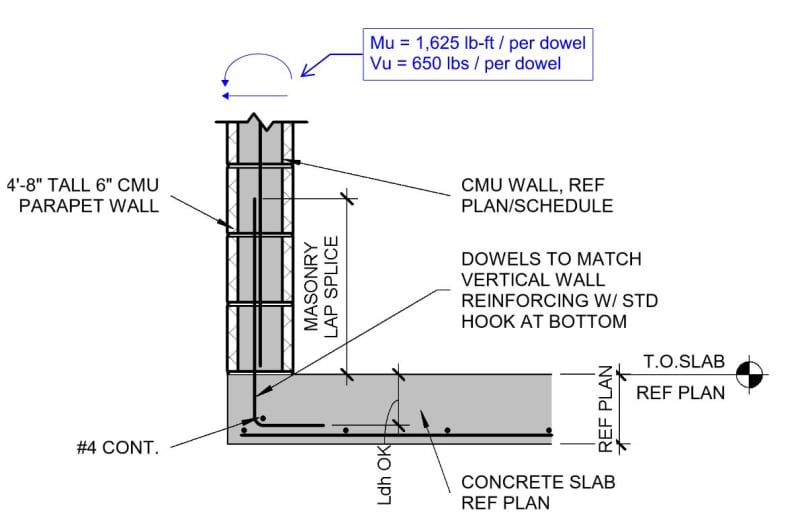MJC6125
Structural
- Apr 9, 2017
- 120
I have a 6" CMU parapet wall sitting on top of the edge of a 8" elevated concrete slab. See image below for reference. The wall is cantilevered (vertically) from the slab, so I want to make sure I'm not missing anything related to designing the joint between the CMU wall and the slab. When I have suction wind pressures pulling away from the building this will become an "opening" joint, which I know from previous posts on this site is not a simple thing to detail.
My loads are relatively small, so I was thinking I could justify this connection using ACI chapter 17 anchorage design rules. I'm getting a tension force on the rebar of approximately 7 kips. Everything according to ACI chapter 17 for a 1/2" diameter j-bolt seems to be working (steel strength & concrete breakout), except for pullout strength (ACI 17.4.3). Does a standard 90 degree ACI hook meeting the Ldh requirement automatically preclude a tensile pullout failure from ACI 17.4.3?
Would you add any other reinforcement to the slab edge to control breakout or anything even if the ACI chapter 17 equations aren't saying I need it?

My loads are relatively small, so I was thinking I could justify this connection using ACI chapter 17 anchorage design rules. I'm getting a tension force on the rebar of approximately 7 kips. Everything according to ACI chapter 17 for a 1/2" diameter j-bolt seems to be working (steel strength & concrete breakout), except for pullout strength (ACI 17.4.3). Does a standard 90 degree ACI hook meeting the Ldh requirement automatically preclude a tensile pullout failure from ACI 17.4.3?
Would you add any other reinforcement to the slab edge to control breakout or anything even if the ACI chapter 17 equations aren't saying I need it?




